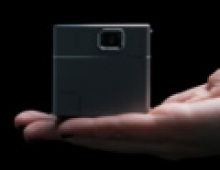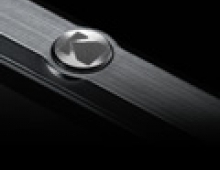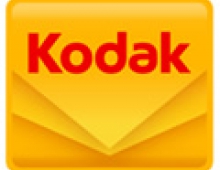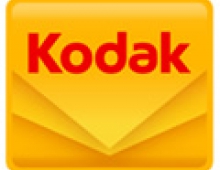
Kodak Licenses OLED Technology to Fuji
Eastman Kodak Company said that Fuji Electric Holdings Co., Ltd. of Japan (Fuji) is a licensee of Kodak's organic light emitting diode (OLED) technology.
Fuji plans to apply its license toward development of its own color conversion matrix (CCM) full-color OLED display technology with the intention of offering flat panel passive matrix (PM) displays.
Based in Tokyo, Japan, Fuji Electric Holdings is comprised of four operating divisions: Fuji Electric Systems, Fuji Electric FA Components & Systems, Fuji Electric Device Technology and Fuji Electric Retail Systems. The company is focused on the development of high performance components, products, systems and services in the industrial, automation and information device fields.
Fuji Electric's CCM technology uses a production technique the company calls the "metal mask-less organic film deposition method," for dramatic improvement in manufacturing yield rate, and greater reliability in full-color PM displays.
Fuji Electric joins the ranks of more than 15 other OLED licensees. Fuji Electric's research and development company, Fuji Electric Advanced Technology Co., Ltd., also obtained the technology to increase both luminous efficiency and longer lifetime in CCM displays.
The royalty-bearing license to Fuji Electric covers use of passive-matrix OLED modules in a variety of flat panel display applications and includes a cross-license under Fuji Electric's own considerable patent portfolio in the OLED technology field. The agreement also gives Fuji Electric the opportunity to purchase Kodak's patented OLED materials for use in manufacturing displays.
Organic solid-state displays offer bright, sharp images that are viewable from almost any angle. OLED displays comprise thin films of organic materials that emit light when stimulated with an electrical charge. Unlike to LCD displays, OLED displays do not require a backlight. According to Fuji, benefits over conventional technologies include extended color gamut, higher contrast, wider viewing angle for superb readability in most lighting conditions, faster response time to support crisp streaming video, and thinner design for better ergonomics. These benefits provide direct advantages for a variety of applications such as digital cameras, portable media players, mobile phones, PDAs and other devices.
Based in Tokyo, Japan, Fuji Electric Holdings is comprised of four operating divisions: Fuji Electric Systems, Fuji Electric FA Components & Systems, Fuji Electric Device Technology and Fuji Electric Retail Systems. The company is focused on the development of high performance components, products, systems and services in the industrial, automation and information device fields.
Fuji Electric's CCM technology uses a production technique the company calls the "metal mask-less organic film deposition method," for dramatic improvement in manufacturing yield rate, and greater reliability in full-color PM displays.
Fuji Electric joins the ranks of more than 15 other OLED licensees. Fuji Electric's research and development company, Fuji Electric Advanced Technology Co., Ltd., also obtained the technology to increase both luminous efficiency and longer lifetime in CCM displays.
The royalty-bearing license to Fuji Electric covers use of passive-matrix OLED modules in a variety of flat panel display applications and includes a cross-license under Fuji Electric's own considerable patent portfolio in the OLED technology field. The agreement also gives Fuji Electric the opportunity to purchase Kodak's patented OLED materials for use in manufacturing displays.
Organic solid-state displays offer bright, sharp images that are viewable from almost any angle. OLED displays comprise thin films of organic materials that emit light when stimulated with an electrical charge. Unlike to LCD displays, OLED displays do not require a backlight. According to Fuji, benefits over conventional technologies include extended color gamut, higher contrast, wider viewing angle for superb readability in most lighting conditions, faster response time to support crisp streaming video, and thinner design for better ergonomics. These benefits provide direct advantages for a variety of applications such as digital cameras, portable media players, mobile phones, PDAs and other devices.


















